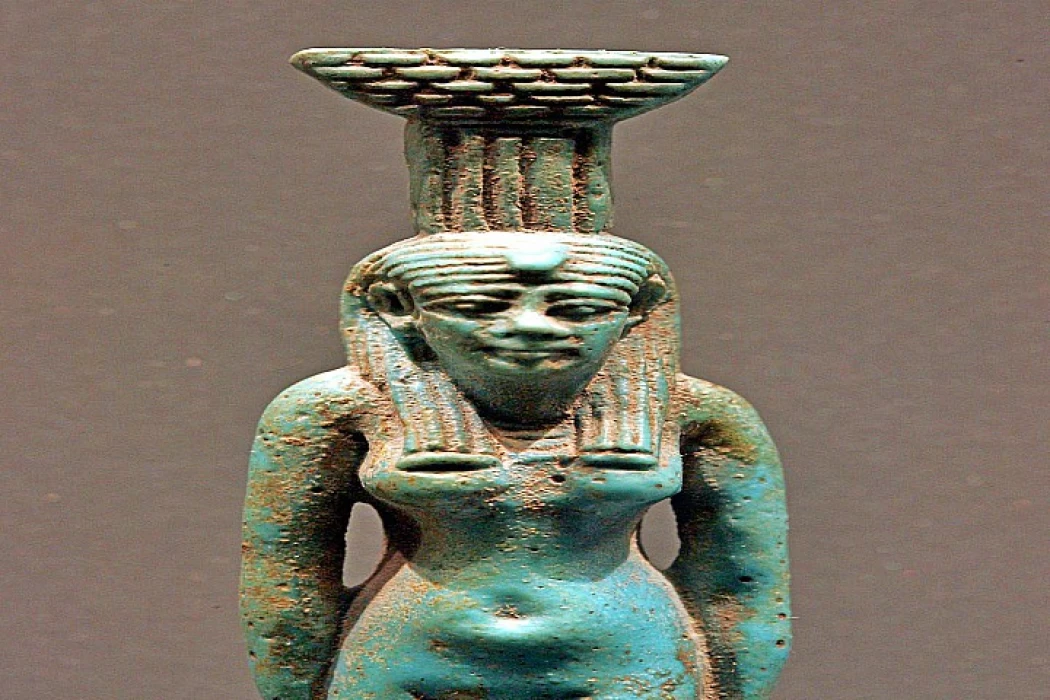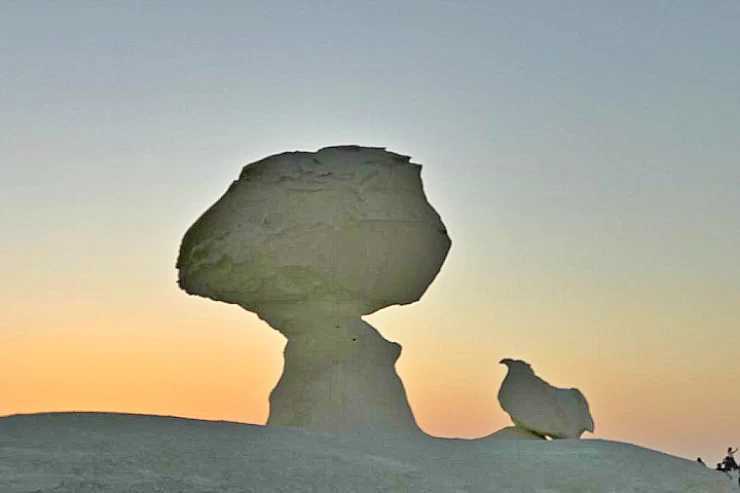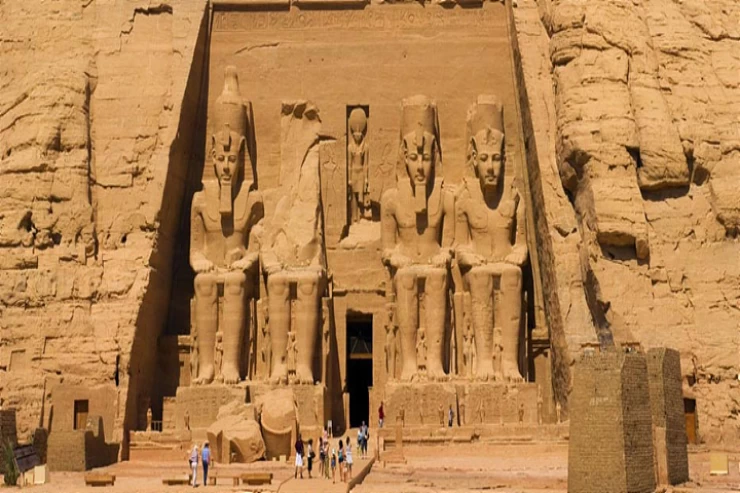
Goddess Nephthys | The House’s mistress
Mythology relates the goddess herself with her sister Isis in funerary rites as both were protectors of mummies. “Nephthys” literally translates to “mistress of the house.” The goddess’s name specifically means “mistress of the temple.” This directly links her to the role of priestess.
The Pyramid Texts of the Fifth Dynasty describe Nephthys as a goddess of the Heliopolitan Thasos. A few ancient Egyptian temple theologies call Nephthys “assistant goddesses.” These Egyptian texts describe the goddess as someone who represents protective guardianship and divine assistance. The pyramids are remaining wonders from thousands of years that you can explore during Cairo Day tours and see the enchanting works of Egyptian civilization.
According to the famous Osiris story, she was called the primary mother goddess who nursed the incarnate god Horus. The texts consider her the nurse of the ruling pharaoh. Myths say that Nephthys could burn the enemies of the pharaoh with her hot breath. The outstretched wings represent a symbol of protection and the association of Nephthys with the falcon reminded the ancient Egyptians of lamentation during mourning rituals.
Furthermore, the Pyramid Texts identify Nephthys’ association with death and this shows how the pharaohs became stronger on their journey to the afterlife because of Isis and Nephthys. You can discover the great beautiful temples that narrate the stories of the Egyptian gods and goddesses during one of the best Egypt Nile cruise tours between Luxor and Aswan. The Pyramid Texts consider the sisters Isis and Nephthys to be a force before which demons tremble with fear.
The famous tale tells how Nephthys helped Isis gather and then mourn the body of Osiris after he was killed by Set. Furthermore, she served as a vigilant guardian of the child Horus. Nephthys was also one of the four “Great Cooks” who ruled the Osirian cult center at Busiris in the Delta. In addition, she held an honorary position in the sacred city of Abydos. The city held annual rituals in which two women played the roles of Isis and Nephthys.
Together, the chosen priestess would perform the “Lamentations of Isis and Nephthys.” The ritual element, known as the “Festival Songs of Isis and Nephthys,” became an important element in many Osirian rituals in the major Egyptian cult centers. You can visit the great temples of Abydos and Dendra during one of Luxor Day Tours during your Egypt Christmas tour to discover the Egyptian history secrets.
Nephthys is literally the mistress of the house. She is one of the chief but most enigmatic deities as far as Egyptian mythology is concerned. She has a very important place in the divine pantheon, although she is always overshadowed by her more famous sister, Isis. A goddess of protection, mourning, and the afterlife, Nephthys most closely relates to death and the transformation or transition of souls.
She is one of the ancient Egyptian gods. According to mythology, she was the mother of Anubis, the god of mummification, from her brother Osiris.In another narration, Umm Anubis. She is famous for her important role in the Osirian myth.
Nephthys (Nept – Het) in the ninth of Heliopolis was the wife of "Sitt"... A wife here is not in the human, material sense, but in Egyptian mythology (which are scientific theories that explain the origin and development of the universe) the concept of husband/wife was the cosmic forces that complement each other's work. Nephthys was finishing up Set's work, which dealt with the cosmic powers that drive humans to take on material bodies and descend into the world.
Children of Geb, the earth god, and Nut, the goddess of the sky, Nephthys is the sister of Isis, Osiris, and Seth. In the myth of some Egyptians, she was the wife of Seth, the god of chaos and storms. Their union is, however, a later development in the myth, presumably to round out the divine couple; for the opposite of the husband-brother, destruction, she is pictured as a nourishing and protective goddess.
Nephthys may be represented as a human figure wearing a headdress with hieroglyphic symbols representing her name, such as a basket on top of a temple or house. Unlike some self-represented members of the Egyptian pantheon who may have animal traits, Nephthys is wholly human. This underlines her aspects of protection and mourning. Temple reliefs, tomb paintings, and funerary texts often figure her beside Isis, particularly in afterlife scenes.
Since she never appears separated from Isis, she is likely even doubled. That the union with Seth is a later elaboration of the myth, born from the desire to have two symmetrical divine couples, is also demonstrated by the fact that Nephthys, as Seth's bride, appears dull.
Nephthys has a completely human aspect and is recognized only by the hieroglyphic symbol of the name she wears on her head (the plan of a building surmounted by a basket). In this aspect, Nephthys. appears, always in union with Isis, alongside the corpse of Osiris (and each dead person becomes an Osiris, thus having the right to the care of the two deities). Even in the scenes depicting the Hereafter, she appears, always paired with Isis, at the side of Osiris, depicted either on the throne as the god of the dead or in a snake aspect; it guards the last door of the Underworld through which the sun will return to earth. These scenes are very frequent on the walls of the tombs, in the funerary scenes and papyri, and sometimes are found on the short sides of the sarcophagi, with the task of protecting Isis the chief and Nephthys.
Place of worship: Heliopolis, but she has no temple or cult. There can be no doubt that the cult of Nephthys existed in the temple and large city of Herakleopolis. A nearby life-size statue of Nephthys (currently housed in the Louvre Museum) boasts an oddly altered inscription.
The basalt image was originally placed in Madinet Habu as part of the celebration of the pharaonic-era tradition of the Sed Festival but was transferred at some point to Herakleopolis.
The god Nephthys protected her brother Osiris from her brother Set. She is one of the protective goddesses, «Isis, Nephthys, Serket, Neith» of the canopic jars containing the entrails of the deceased, known as the sons of Horus.
«Nephthys» appears in the form of a complete female with the sign indicating her and distinguishing her on her head, which no one else carries, which is a rectangular figure topped by a semicircle.
The Book of the Dead and the Pyramid Texts are collections of mortuary texts that portray Nephthys as a goddess who helps and guards the deceased as they walk through the Duat, or underworld.
















